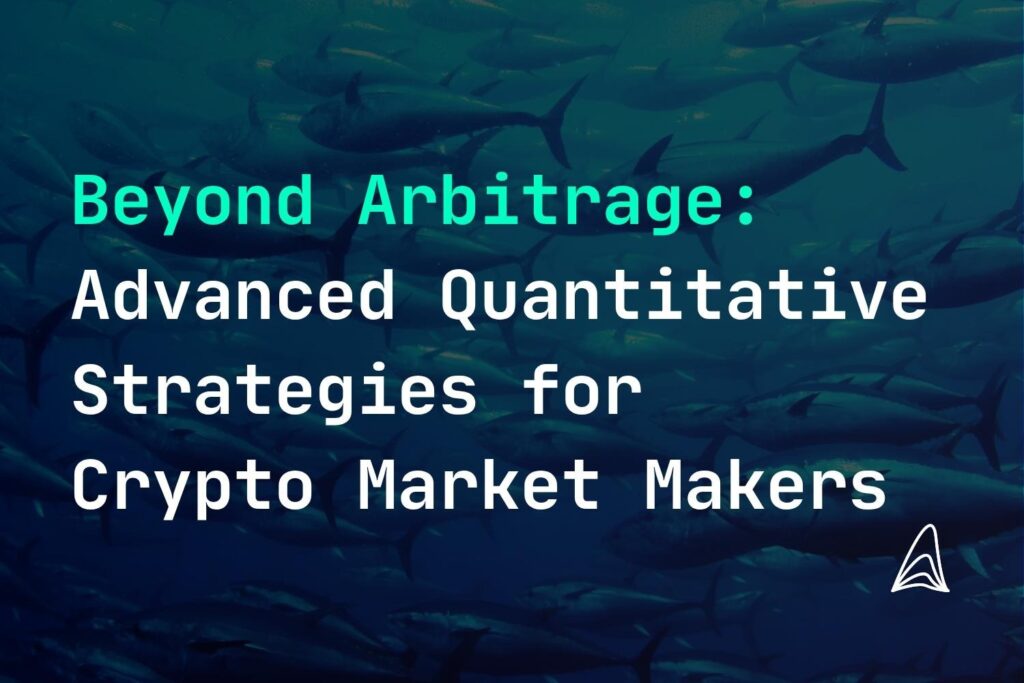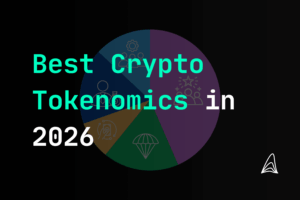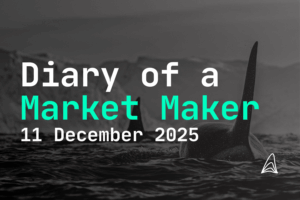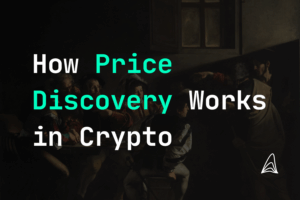
- Jakob Brezigar
- Updated: July 17, 2025
- Reading time: 6 min
Beyond Arbitrage: Advanced Quantitative Strategies for Crypto Market Makers

What Is Advanced Quantitative Market Making?
What defines "quantitative strategies" in crypto market making?
Why move beyond simple arbitrage?
What limitations does pure arbitrage face?
Which advanced strategies complement or replace arbitrage?
Statistical Arbitrage: How can correlated assets improve returns?
Dynamic Spread Adjustment: What practical value does real‑time quoting bring?
Order‑Book Scalping: When do micro‑profits matter?
How can derivatives hedge market‑making exposure?
What role do futures and options play?
What KPIs and frameworks must a market maker monitor?
- Inventory balance ratio: Max % of exposure in a single asset
- Average spread capture: Revenue per trade minus fees
- Fill-through rate: Executed vs posted orders
- Variance & Sharpe ratio: Sharpened returns evaluation
- Risk limits: VaR and max drawdown thresholds
- Compliance metrics: Audit trail, KYC/AML flags, CARF reporting
What are current regulatory trends affecting market makers?
How is global regulation shaping quantitative strategies?
- EU MiCA (Markets in Crypto‑Assets): Fully in force since Dec 2024, MiCA requires strict governance, capital requirements, stress testing, and transparency for CASPs. Orcabay adheres with structured risk models and quarter‑end audits.
- OECD CARF framework: CASPs must report customer tax residences and transaction data globally. Orcabay’s systems integrate automatic reporting pipelines.
- US stablecoin & market‑structure bills: As of July 2025, GENIUS Act (stablecoin oversight) and CLARITY Act (digital asset definitions) are under Congressional debate; passage is projected in late 2025 or early 2026. New rules will require enhanced reserve reporting for market makers involved with stablecoin inventory and issuer relationships.
- AML supervision (EU): The AMLA has flagged crypto as a major money‑laundering risk; CASPs will undergo thematic reviews from 2028 under single‑licence systems.
- Institutional entry & SEC shifts (US): Firms like Citadel Securities are entering market making, and the SEC has shifted from enforcement to a task‑force approach, supporting clear rule‑based frameworks.
What technologies power these strategies?
Which tech frameworks and tools underpin quantitative execution?
- Low-latency infrastructures: Direct APIs, co-location, batching limits.
- Data layering: Combining on‑chain metrics (e.g. liquidity pools) with off‑chain signals (tick volume).
- Machine‑learning overlays: From neural net statistical arbitrage to reinforcement learning for quote placement.
- Derivative connectivity: Futures and options feeds integrated for hedging.
- Compliance stacks: Real‑time sanction screening, audit logs, CARF export.

What trends should we expect into 2026?
How might the landscape evolve in the next 18 months?
- AI‑driven quote optimization: Deep reinforcement learning will enable adaptive quoting based on competition and latency.
- Tokenized asset integration: With asset tokenization expected to reach trillions by 2030, market makers will support corporate bonds, real‑estate tokens and others.
- Regulatory standardization: Post‑MiCA and GENIUS, expect global harmonization of standards and cross‑border CASP collaboration.
- Institutional consolidation: Big‑ticket players with advanced quant stacks will dominate; smaller market makers must outsource or partner.

Conclusion
- Diversified strategy mix: Blend statistical and microstructure strategies for consistent edge.
- Metric discipline: Monitor spreads, fill rates, inventory, volatility, and compliance KPIs.
- Regulatory readiness: Integrate MiCA, CARF, and stablecoin frameworks into systems.
- Tech enablement: Prioritize low‑latency data, ML models, derivative integration, and audit capabilities.
- Future‑proofing: Prepare for AI orchestration, tokenized assets, and institutional competition.
Disclaimer: The information provided in this article is for informational purposes only and does not constitute financial, investment, or other professional advice. All opinions expressed herein are solely those of the author and do not represent the views or opinions of any entity with which the author may be associated. Investing in financial markets involves risk, including the potential loss of principal. Readers should perform their own research and consult with a licensed financial advisor before making any investment decisions. Past performance is not indicative of future results.

Jakob Brezigar
Jakob, an experienced specialist in the field of cryptocurrency market making, boasts an extensive international presence. With Orcabay, he has skillfully managed major operations and deals for a wide array of global stakeholders.



